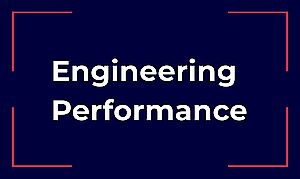For the fourth time DMT GmbH & Co. KG, GNS Gesellschaft für Nuklear-Service mbH and DBE Technology GmbH hosted this event, which again in 2015 enjoyed great popularity among specialists from the mining industry and related research institutes and public authorities.
Imparting knowledge and confronting scepticism
Michael Sailer, member of the Endlagerkommission and the Management Board of the Öko-Institut e.V., asked for understanding for the seemingly long start-up period of the commission. He put this down to the necessity for extensive discussion in order to impart the necessary level of specialist knowledge to commission members from a political rather than scientific background, thus giving them appropriate decision making power and enabling them to tackle both questions and scepticism professionally. In this respect good progress has been made. Although the final report of the commission is not expected until 30 June 2016, one question is likely to be clarified sooner - the supervisory and operational roles in nuclear waste disposal must be clearly separated.
Sailer emphasised the need for a reliable error-detection system, an issue of considerable importance for the future. He went on to explain that in the search for potential repository sites, the commission is not bound by a fixed schedule with no allowance for adjustments and improvements. Likewise, there is no need at this time to clarify issues concerning the specific technical implementation of a disposal facility, such as the future retrievability of the stored waste.
Considerations for a nuclear waste facility in the UK
While in the UK a repository for low-level radioactive waste is already in operation, plans for a medium to high active waste repository (ILW/HLW) are yet to be finalised. Dr. Matthias Peter Messer, GNS Gesellschaft für Nuklear-Service mbH, spoke about the various considerations in his lecture. The British are not only deliberating the different host rock and location possibilities, but also seeking inspiration from modern mining solutions such as the potash mine "YorkPotash" and the London Crossrail.
Although not yet decided where in the UK and in what host rock the repository will be constructed, suitable storage containers are already available. The first barrels conditioned by GNS have received the "Letter of Compliance" the official seal of approval from the British authorities.
The significance of the Chernobyl disaster for nuclear waste disposal in Ukraine
The disaster at Reactor No. 4 of the Chernobyl power plant accounts for 96 Percent of the nuclear waste in Ukraine, claims Mykola Proskura, long-serving former deputy manager of the federal agency for the administration of the Chernobyl Zone. A special feature of such medium and high level radioactive waste is that large quantities thereof contain significant activity of long-lived nuclides. For this reason it is not suitable for storage in the "Vector" complex, a surface disposal facility for short-lived low and medium level radioactive waste, but rather confined to a geological disposal facility.
There are currently only two possible locations for an underground repository in Chernobyl, both of which are located in the west of the restricted zone. It is therefore already clear that the host rock will be granite. Whether the waste will be housed in a mine or in 2 to 4 km deep drill holes is yet to be determined.
Proskura pleaded that either way the interim storage of the radioactive waste should not be allowed to become a long-term storage solution.
The French nuclear waste facility Cigéo
In his lecture, Thilo von Berlepsch, DBE TECHNOLOGY GmbH, reported on how advanced the plans are for the construction of a storage facility in France. While low radioactive waste is deposited on the surface, in 1991 plans for an underground waste facility for highly radioactive waste were given the go-ahead. Four locations were intensively assessed before the decision was made in 1998 to build an underground laboratory in Bure. The license application for the construction of the final repository in this area is currently in preparation. DBE TECHNOLGY GmbH is assisting the French national radioactive waste management agency (ANDRA), for example, with the simulation of the complete logistics and underground transport. This includes modelling an approximate 150-year project cycle covering construction, simultaneous storage and further excavation through to closure. Moreover, the company is designing the conveying systems in the shafts for the transportation of both materials and staff, which, according to current plans, means the transport of, inter alia, up to 180 rotating concrete mixers per day for the construction of the roadways as well as the transport of approximately 250 people per shift.
Invitation to Technical Meeting on Geological Disposal of Nuclear Waste 2016
The hosts are already looking forward to a good turn-out at the "5th Essen Technical Meeting on Geological Disposal of Nuclear Waste" on 25th February 2016 – a date many of this year's participants will surely have saved.
Contact and further information:
Dr. Daniela Gutberlet
Tel.: +49 201 172-1552
Our nuclear waste disposal services
Download the press release International overview at the 4th Technical Meeting on Geological Disposal of Nuclear Waste in Essen (pdf).


